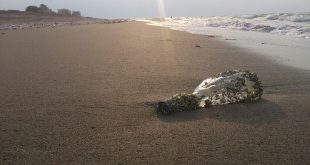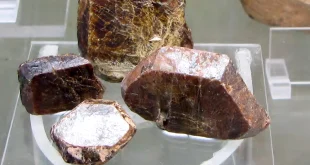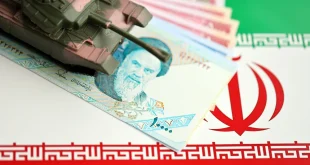It is clear that by the end of this year, the last year of the Sixth Development Plan, Iran will have failed to implement most of the goals of this program. Sanctions, domestic mismanagement and foreign policy problems have prevented Iran from attracting the necessary capital and technology by increasing the production and export of oil and operating important sectors of the economy and industry.
Following the end of the Iran-Iraq War, the Iranian majlis (parliament) has approved, implemented, and concluded five five-year development programs. Due to the government‘s delay in submitting the Sixth Development Plan bill, it had to present the “Bill of Rulings Required for the Implementation of the Sixth Development Plan” on January 17, 2016, so it was not possible for the parliament to approve the Sixth Development Plan by 2015, its target date.
However, over the past five years, conditions have dramatically changed, both inside Iran and throughout the region. One of the most significant changes was the withdrawal of the United States, under President Donald Trump, from the 2015 JCPOA nuclear agreement, and the subsequent re-imposition of sanctions on Iran’s energy industry and banking sector. Owing to these sanctions, but also to corruption and mismanagement, foreign investment has failed to materialize, Iranian oil revenues have declined precipitously, and the Iranian currency has lost much of its value. The goals of Iran’s five-year plan, scheduled to conclude by the end of 2021, will almost certainly not be achieved.
An 8% Growth Target
Iranian government spokesman Mohammad Baqer Nobakht announced that Iran’s sixth five-year development plan (2016-21), which lays down the government’s 5-year budget plan strategies, aims for a growth rate of 8% per year. To this end, President Hassan Rouhani noted that Iran needed to seek out substantial foreign investments. Claiming that the target of an annual 8% growth could only be reached with foreign investments valued approximately at $30-50 billion, Rouhani submitted a draft plan to the parliament in mid-January 2016. The initial guidelines of this plan were drafted in July 2016 with the approval of Supreme Leader Seyyed Ali Khamenei. Nobakht, the head of Iran’s Management and Planning Organization and an adviser to the president, also mentioned that other goals of the Sixth Plan were to decrease the rates of unemployment and inflation to single-digit figures: 12.8% and 10.7%, respectively. As reported by Nobakht, the sixth plan is based on a “resistance economy”, entailing policies aiming to “counter sanctions, boost production, and reduce consumption.” He added that, in order to reach the 8% annual growth target, significant reforms would be made to the water, gas, and electricity sectors – but, most importantly, to Iran’s oil industry, which accounts for fifteen to twenty percent of the country’s GDP and a large share of its government revenue.
Iran’s Development Priorities
The oil fields shared between Iran and its neighbors underwent a slow-paced development process over the last decade for several different reasons, one of which was neighboring countries’ reluctance to share oil production. While this inclination favored the neighboring countries, it had a negative impact on Iran. Hence, the challenge of resolving the issues surrounding shared oil reservoirs is of high priority with respect to not only the oil and gas fields but also the Sixth Development Plan.
Given that Iran’s energy industry has faced many sanctions since the 1979 revolution, the export of petrochemical products has long been one of Iran’s primary methods to reduce the impact of sanctions and currency appreciation. However, as demand for oil has decreased due to the advent of electric cars and fears over climate change, the outlook for oil and gas demand is declining, in favor of renewable energy. Therefore, diversification and further development of the petrochemical industry, particularly with a focus towards high-end manufacturing, is needed.
According to Behzad Mohammadi, Deputy Minister of Oil and CEO of the National Petrochemical Company, the oil industry is the primary source of foreign exchange resources in the country. Mohammadi, who pointed out that the development plan of Iran’s petrochemical industry should be changed in accordance with global developments, said, “It is necessary to move from the development of one product and one feed to the development of one feed and production of several products to create sustainable development. Let us increase and get rid of some uncertainties in the world, so the most important solution for the country’s petrochemical industry is smart development, which is also on the agenda of the National Petrochemical Company.”
Referring to the operation of the remaining 27 projects of the second leap of the petrochemical industry by the March 2022, he said, “The capacity of the industry will increase from 66 million tons to 100 million tons, which according to the commitment of the Sixth Development Plan should reach this figure.” He added, “The income of the petrochemical industry will increase from the current $ 15 billion to $ 25 billion in 2022.”
According to the planned goals of the Sixth Development Plan, by the end of 2021, the government was to generate $37 billion in revenue from the sale of petrochemical products. However, because the initial $50 billion in requested funding never materialized, and the Trump Administration implemented financial and banking sanctions against the plan, this goal was not realized.
Priorities of the National Iranian Oil Company in the Sixth Development Plan
In the Sixth Development Plan, the National Iranian Oil Company (NIOC) set a series of goals to increase its daily oil production capacity to 4.7 million barrels, daily gas production capacity to 1.3 billion cubic meters, and liquid and gas condensate production capacity to 1.1 million barrels per day. At the same time, the plan seeks to achieve new innovations and commercialization of technologies in the oil and gas industry to support the social tasks of the National Iranian Oil Company. Accordingly, the program aims to increase the potential for oil exports and increase the amount of gas and water injected into the fields. One of the important strategies that must be implemented in the oil and gas industry is to increase the recycle ratio – i.e. the profitability of developing a field – and optimize production methods. Unfortunately, in this regard, the country’s oil industry suffers from severe weaknesses, and huge financial losses have been imposed on Iran’s national wealth because of inefficient extraction methods. To protect Iran’s oil and gas reserves, it is necessary to use methods appropriate to their structure, and Iran should also make efforts to attract domestic and foreign scientists and specialized companies.
The Role of Sanctions
America’s withdrawal from JCPOA, and the sanctions imposed on the Iranian energy industry by the Trump administration, reduced the country’s oil and gas production capacity and led to the withdrawal of foreign companies operating in the oil and gas fields, forcing Iran to draft plans to compensate for the decline.
According to the Sixth Development Plan, if Iran’s GDP was to grow 2.8 percent annually, it would require $35 billion in domestic and foreign investment. By the same metric, an 8% growth rate would require investments of $175 billion over a period of five years. This goal is, for all practical purposes, unattainable; foreign investors, both non-state and state, have effectively been given the choice between doing business with Iran or America, and have invariably chosen not to engage with Iran. Iran expected to advance its development goals, especially in West Karoun fields, to produce about 4.5 million barrels of oil per day by the end of the Sixth Plan. To produce 1.3 billion cubic meters per day, the production of gas condensate will increase in proportion to the production of gas and will reach 864,000 barrels per day at the end of the program.
According to Ali Kardar, former Deputy Minister of Oil, the main increase in gas production will be provided by the South Pars production site. However, to increase the production capacity of about 170 million cubic meters from the development of crude fields of the National Company of Southern Oilfields, South Zagros gas fields in the oil of the central regions and gas fields of the Offshore Oil Company are also planned. The goals of the upstream oil industry require about $120 billion in capital. However, given the difficulty of raising capital due to foreign sanctions, it is extremely unlikely that these goals will be achieved.
Under normal circumstances, Iran could provide a part of the necessary capital and technology for industrial projects, especially in the oil and gas sector. For example, prior to the re-imposition of sanctions, Iran had negotiated agreements with France’s Total, China’s CNPC, and several Russian companies. Europe initially agreed to carry out some projects, but with the withdrawal of the United States from the JCPOA and the imposition of sanctions on Iran’s oil industry, all foreign companies left the Iranian oil industry.
It is clear that by the end of this year, the last year of the Sixth Development Plan, Iran will have failed to implement most of the goals of this program. Sanctions, domestic mismanagement and foreign policy problems have prevented Iran from attracting the necessary capital and technology by increasing the production and export of oil and operating important sectors of the economy and industry. With the continuation of the current foreign policy – missile and nuclear program and the imposition of new sanctions – one should not expect high economic growth and an increased Iranian presence in the energy market.





